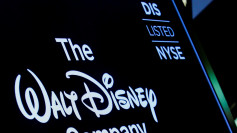For more than a century, De Beers has sold most of its rough diamonds to who's who of the diamond trading world. But now the the status symbol doesn't matter that much anymore with profits not as lucrative as before.
Being a De Beers buyer, a sightholder, like Graff Diamonds, Tiffany & Co. and Signet Jeweler Ltd. among others, is an achievement in the diamond industry. They're selected based on proven abilities in manufacturing excellence in relevant categories of rough diamonds, strict adherence to ethical accountability, business planning and reputation.
A De Beers sightholder not only means quality but consistency and predictability of diamond supply.
The company sells diamonds the way it did since the 1890s. Their system was designed to benefit both miners and customers.
Each year, the company conducts 10 sales in Gaborone, Botswana to the exclusive buyers, the sightholders. Buyers have to the accept the price and number /amount of diamonds they're offered.
It is this price, discounted by De Beers, that will be a profit in the long run. This is now disappearing as sightholders have to accept the price which is higher than the ongoing trade rate and sell at a loss.
The dilemma of the diamond industry comes from the stagnant sales of many luxury items because of a crowded market plus the difficulty of diamond trading companies to find capital because banks abandoned diamond financing after being hit by frauds and bad loans.
Still, De Beers is spending on the market and is improving on tracing the supply chain to prove that diamonds aren't causing any human-rights abuses or conflicts.
This however, doesn't change the relationship between De Beers and the sightholders because prices are still kept high.
For the 80 plus sightholders, the profit margins had turned wafer-thin or completely disappeared. Many of them are refusing to buy at the current price.
Though some of them, like Graff and Tiffany whose trading and polishing diamonds is only a small part of their business are still afloat, some already went out of business. Eurostar Diamonds, one of De Beers' biggest buyers, went bankrupt this year.
This is not to say that only De Beers' sightholders are the only ones struggling. Anglo American Plc, its parent company's sales in the first half of this year is $500 million less during the same period for the last three years.
Because of all of these, this year, rough diamond prices are down 6%. Polished stones' prices are about 1% lower.
"It's not an easy time right now," according to Chief Executive Officer Bruce Cleaver. Still he stands by the robust demand and the knowledge that millennials will want diamonds the same way their parents and grandparents did.






